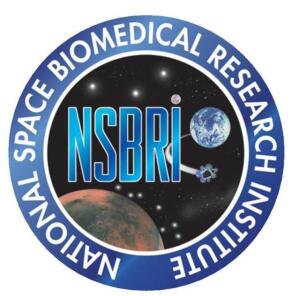Ultrasound Device Being Built by Space Biomedical Researchers
by
Lynn Shapiro, Writer | February 18, 2009

NSBRI
HOUSTON - The fight against bone disorders that affect millions of Americans will soon receive a boost from an ultrasound device being developed by space biomedical researchers. The technology under development will allow early prediction of bone disorders such as osteoporosis and guided acceleration of fracture healing.
National Space Biomedical Research Institute (NSBRI) scientists are developing the technology to assist astronauts during long-duration spaceflights. Like the elderly on Earth, astronauts in space lose bone structure and quality.
Dr. Yi-Xian Qin, associate team leader for NSBRI's Smart Medical Systems and Technology Team, calls the new technology Scanning Confocal Acoustic Navigation (SCAN). He said the objective is to develop a small, mobile device that is easy to use and patient friendly.
"SCAN uses non-invasive and non-destructive ultrasound to image bone. It will allow us to identify weak regions, to make a diagnosis and to assist in healing fractures," said Qin, who is also the director of the Orthopedic Bioengineering Research Laboratory at Stony Brook University, the State University of New York.
Stress-related fractures are a big concern for astronauts during long missions to the moon or in space. Qin said the fracture rate could be high on the moon due to workload force, heavy spacesuits and gravity that is one-sixth of Earth's.
The researchers are developing the new technology using scanning confocal acoustic diagnostic imaging for diagnosis and low-intensity pulsed ultrasound technology for treatment. Compared to current diagnostic ultrasound scanners, Qin's new technology is more advanced because of its ability to assess a higher number of parameters and is designed for imaging of hard tissue such as bone.
"Our new ultrasound technology can detect bone mineral density. In addition, we can assess bone quality, such as stiffness, and then predict the risk of fracture," Qin said. "Overall bone quality assessment, including strength and structure, is essential because the risk of fracture is probably more related to the quality of a bone rather than the density of a bone alone."
On Earth, X-ray machines are the standard tools of choice for monitoring bone health, but they are only used to detect bone mineral density. X-ray machines are not ideal for use in space due to the health risk radiation poses to astronauts, who are exposed to higher levels of radiation outside of Earth's protective atmosphere and magnetic field.
